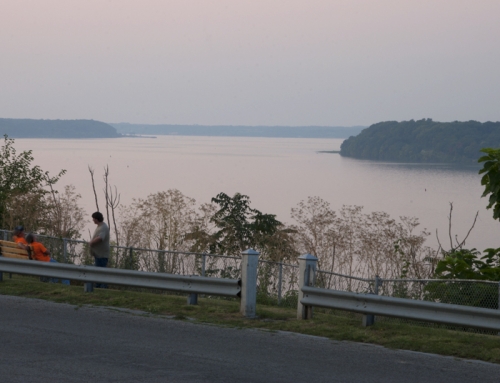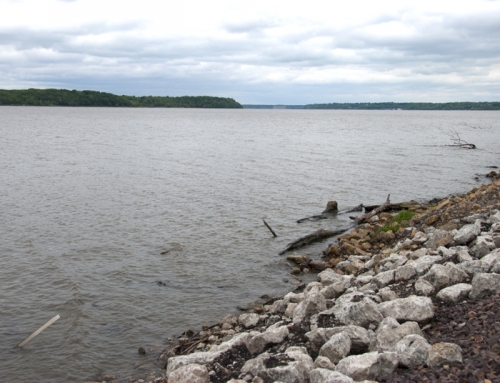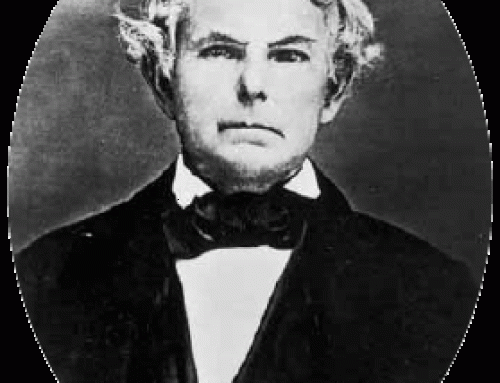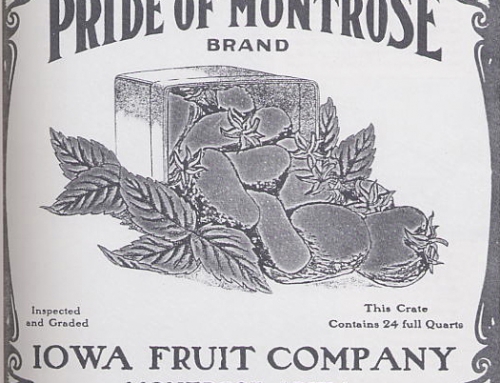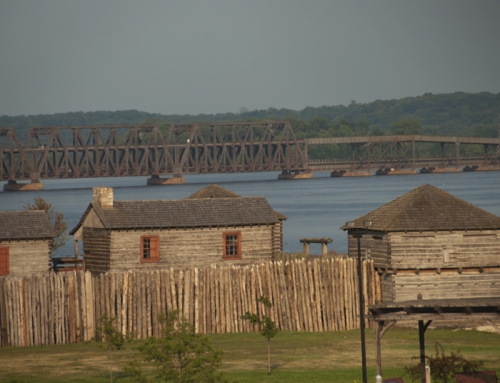Introduction
Clayton, like other river towns, was once a busy steamboat stop, but, unlike many of those other towns, it is still a busy port. Produce from eastern Iowa is trucked in and stored in large bluffside silica mines then shipped downriver.
Visitor Information
Visitor information is available through the Clayton County Development Group (563.245.2201) located in Elkader or through Guttenberg Development and Tourism (563.252.2323).
History
The future village of Clayton was surveyed in 1849 and named after John M. Clayton (the Whig Senator from Delaware and Secretary of State under Zachary Taylor) at a time when this area was still a patch of dense forest. The village grew into a moderately busy steamboat stop, primarily as a shipping point for wheat. The financial crash of 1857 blunted the town’s future prospects, however, and it never grew much beyond where it started, even with the opening of the silica mines in 1878 (and that are still operating). By the late 1800s, Clayton had four churches, a school, bank, railroad stop, a post office, and a saloon—basically everything you need for a respectable town.
A fire in 1900 destroyed 23 buildings. Townsfolk summoned some of that famous Midwestern stubbornness and started rebuilding right away; the town officially incorporated in 1901. Like many small towns in the farm belt, Clayton suffered tremendously during the Great Depression; the bank closed and most businesses left, except for the sand plant and a few commercial fishers.
Silica mining has been through two different stages. An open-pit quarry operated from 1878 until the 1930s. Underground mining using the “room and pillar” method began in 1916. The mine is currently about 60 acres in size, has 14 miles of tunnels, and goes as deep as 250 feet below the surface. In 1964, the sand mine was equipped with supplies so it could serve as a bomb shelter, and a very large one at that—large enough to support 44,000 people. The capacity of the shelter was quite impressive, especially since the surrounding area only had 18,000 residents, and there was only one road to it. (The mine is no longer designated as a bomb shelter and is not open to the public.)
In the 1970s, a grain elevator was built next to the river near the foot of Main Street. You may have noticed that Main Street has a steep slope that ends at the Mississippi River, so I’m sure you won’t be surprised to learn that seven trucks had brake failures in the first two years after the elevator opened and ended up in the river. The elevator eventually closed.
Exploring the Area
A few miles south of Clayton, the Pleasant Ridge School (Clayton County Highway X56; 563.252.3776/563.880.9336; tours by appt.) educated rural students (K–8) from 1893 to 1954, never more than 19 in any year. The interior remains as it was at the time the school was closed on May 20, 1954, complete with desks, chalkboard, and the original school bell. The exterior of the stone building is covered with a pebble dash texture that gives it a concrete appearance.
Parks Along the River
There is a small riverfront park with a picnic table and shelter.
**Looking for more places to visit along the Mississippi River? Check out Road Tripping Along the Great River Road, Vol. 1. Click the link above for more. Disclosure: This website may be compensated for linking to other sites or for sales of products we link to.
Where to Eat and Drink
Detour off the highway and down a coulee to enjoy a tasty meal with great river views at the Clayton Lighthouse (100 N. Front St.; 563.964.1100). The menu includes standard bar food options but with a supper club touch, and those river views will keep you smiling through your meal. The restaurant is 11 miles south of McGregor in the hamlet of Clayton.
Where to Sleep
Claytonian Bed and Breakfast (100 S. Front St.; 563.964.2776) has three comfortable rooms in a converted old-school motel.
Where to Go Next
Heading upriver? Check out McGregor.
Heading downriver? Check out Guttenberg.
Community-supported writing
If you like the content at the Mississippi Valley Traveler, please consider showing your support by making a one-time contribution or by subscribing through Patreon. Book sales don’t fully cover my costs, and I don’t have deep corporate pockets bankrolling my work. I’m a freelance writer bringing you stories about life along the Mississippi River. I need your help to keep this going. Every dollar you contribute makes it possible for me to continue sharing stories about America’s Greatest River!
©Dean Klinkenberg, 2024, 2021, 2018,2013,2011


